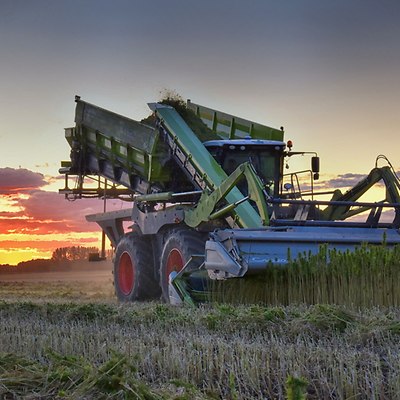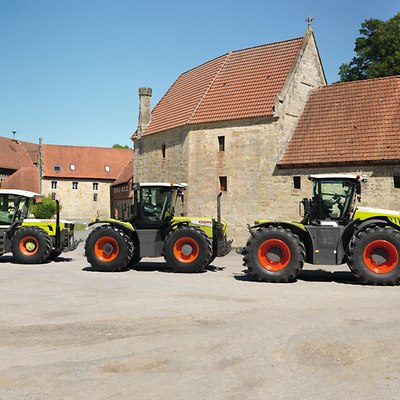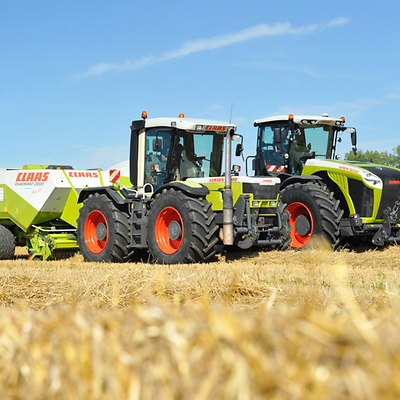

The power baler.
The QUADRANT baler has been setting the benchmark from the moment it came onto the market. Together with the XERION system tractor, they really are a dream team.
From tillage and manure spreading to silage clamp work: the XERION has proved a particularly versatile tractor since its launch in 1997 – in part thanks to the wealth of implements that can be mounted to it.
And just like the XERION, these implements have evolved significantly in the last 25 years. The QUADRANT is a perfect illustration of the pace of technical progress – with more than 5,000 units sold, it is the most popular square baler in Germany.
Up to 30 tonnes of straw per hour.
The first QUADRANT set new standards when it was introduced in 1988 – with bale dimensions of 0.7 times 1.2 m, bale lengths of up to 2.5 m and an hourly capacity of up to 30 t of straw.
In 1999 it was superseded by the radically redesigned QUADRANT 2200. It had a 3 m long bale chamber, a 2.1 m wide pick-up, up to 25 knives and a ram frequency of 51 strokes per minute.
Here at last was a square baler that could make full use of the 250 hp of the very latest XERION 2500. With its chainless drive, the QUADRANT 2200 marked a new milestone in the history of square balers.

Double the throughput and digital functions.
The QUADRANT has continued to evolve during the last 20 years. The latest model, the QUADRANT 5200 EVOLUTION, has a 3.85 m long bale chamber, and a wider 2.35 m pick-up. The baler also has 51 knives and – depending on the model – runs at up to 56 ram strokes a minute.
"Like the XERION, the QUADRANT has again seen a significant increase in performance since the end of the nineties", says baler sales rep Hendrik Henselmeyer. "The baler throughput capacity has virtually doubled." The performance of standard tractors has also evolved in recent years, even beyond 400 hp; a QUADRANT and XERION combination is still a remarkable sight though."
The QUADRANT can now be operated effortlessly via ISOBUS, but the CEMIS 700 is also an option. In this case up to two cameras can be connected to the CEMIS 700.
The data transfer system TELEMATICS on IMPLEMENT (TONI) enables baling operations to be tracked remotely. "So the farmer can pinpoint the exact location of the tractor-baler combination at any time and check the bale quality", Hendrik Henselmeyer explains. "At the end of the shift, the software shows which part of the field the baler has covered and how many tonnes of square bales of what quality were collected where. The basic requirement is that the XERION has TELEMATICS; but nowadays all machines in Germany do."

Focus on quality.
There's one function that has remained constant throughout the decades: thanks to the high-performance single knotter, patented by CLAAS back in 1921, all QUADRANT model produce perfectly tied square bales, leaving no twine residue on the field. "This means that QUADRANT drivers can save up to 15 km of twine a year", says Henselmeyer.
Furthermore, to this day the baler still has a chainless drive to minimise wear. The focus is on quality and efficiency – another point the QUADRANT and the XERION have in common.











